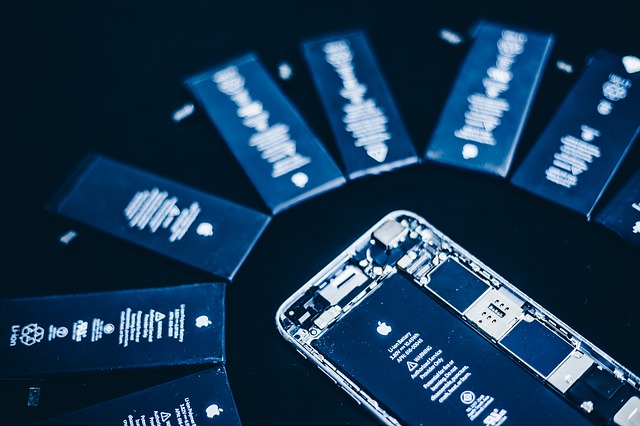Puffed Li-Po Battery
Dec 05, 2019 Pageview:4028
A lithium-ion polymer battery also called LiPo battery is a rechargeable battery of lithium-ion technology using a polymer electrolyte which is semisolid gel like a structure instead of using a liquid electrolyte. These batteries have much high-density energy as compared to usual lithium batteries and are used in huge weighted equipment like aircraft controlled by radio.
During the 1980s, LiPo cells researched after lithium-ion and lithium metal cell which then commercially came into the market by Sony in 1991. It is an evolving cell from lithium-ion and lithium metal batteries.
These batteries are fine among other batteries with minimum discharging time and they required low maintenance. Although they are working good for a long time, every battery has a life which if cared more then will work for a longer period. The question is how, why and when the battery is damaged or puffed and how we can depuff it and prevent it from puffing. Let’s dig into it.
How to tell if LiPo is puffed?
LiPo batteries are puffed by the generation of gas in it. The reason for gas generation is overcharging and overheating or any physical damage happened to the LiPo batteries which makes electrolyte decomposition faster. The electrolyte is a chemical inside the battery used to flow the charged ions from anode to cathode during discharging and cathode to anode during charging.
In electrolyte decomposition, the electrolyte is breaking down which in the end leaves lithium and oxygen in the battery. This lithium and oxygen combined to make lithium oxide on anode or cathode depending if the battery is charging or discharging. But the oxygen is in the excess amount which makes the battery swell or puffed and in more danger scenarios excess oxygen meets with carbon and from moisture comes hydrogen to form methane and the battery explodes.
These puffed batteries are unable to fit in your equipment or it becomes harder to fit the battery in it. Their outer coverings swell up and move away from the cell inside. There comes a space between the covering and the cell which have oxygen gas in it.
These batteries are dangerous but can be depuffed to make them useful again.
How to depuff a LiPo battery?
Depuffing also called degassing of the batteries is a process used to remove the excess amount of gas to bring back the battery in its initial state to make it useful again. The electrode of lithium oxides when infused with a graphite metal (carbon) and the hydrogen from moisture in the air fuse together then methane is generated which is hazardous to the battery.
The hard discharging and charging of Li-Po batteries are the main reason to generate heat which in turn accelerates the production of methane. This process of methane generation from the atmosphere is stopped when all the internal moisture is converted, and no gas generation takes place. This is why the depuffing process is also called degassing because it removes the gasses generated in the battery.
Experts do the depuffing process themselves by removing the outer packaging of the battery to shrink the gasses in it and cover it up again after the puffiness is gone.
Moreover, a temperature change can also help in shrinking those gases. In hot temperature, there are more chances of a Li-Po battery being puffed and in cold temperature, the generated gases have no more room left so they gradually leave the place and the puffiness of the Li-Po battery slightly comes back to almost its initial state.
How to prevent Li-Po puffing?
All n=things needs care so do batteries to serve longer. Preventing Li-Po from puffing needs some simple steps to remember.
Give a proper charge: Use a quality battery charger to charge your battery properly and safely. You must put your Li-Po battery in a Li-Po bag while charging. Buy one if you do not have to safe charging and preventing the danger which happens without any warning. The bag is a major fire preventing mechanism. The inner lining of the bag is made up of fire-retardant fiberglass material which helps in reduces the fire inside the bag.
Make sure to not over-discharge: When your battery is at the minimum level of charging or almost at cut-off voltage immediately stop using it and give it a proper charging to the prevention of battery damage or reducing the life cycle of the battery.
Heat is hazardous to the battery: If you are in hot temperature the battery becomes warmer more often. Do not use or charge the batteries at that time and try to place your batteries in colder place after using them to increase their life span. Even after charging give your battery rest before using it.
Store your battery in a proper location: In summer, batteries need some extra care because its hot everywhere. Do not put them in the area which is hotter than others like a car trunk. Store your LiPo batteries in a proper location.
Conclusion
As summed up, LiPos are very useful and age longer if they are used properly with high energy density. If not treated well, LiPo batteries will become puffy and, in some cases, explodes due to the chemical reaction takes place inside the battery. Once you get a puffy LiPo, then discharge it completely for safety and remove the gases called the depuffing process. To get a battery with a higher life span following the prevention rules and if something happens and you are in a panic then kindly take an expert’s advice.
- Prev Article: How much do you know about USPS Lithium-ion battery?
- Next Article: Discussion on lithium ion battery fumes
Leave Message
Hottest Categories
-
Hottest Industry News
-
Latest Industry News














